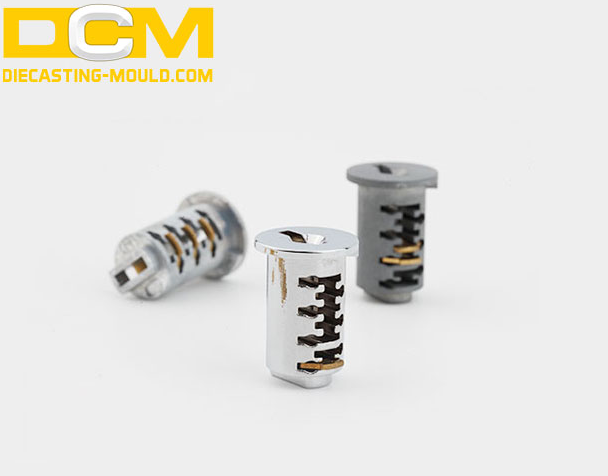Casting is a popular method in the lock industry, it provides lots of benefits. Which one should you choose and what lock parts can you make?
What Lock Parts are Made by Casting - Cast Lock Parts & Components
Lock parts can be made using a variety of casting processes, including die casting, sand casting, and investment casting. Here are some examples of lock parts that are commonly made using casting processes:
– Lock Bodies: typically made using sand casting or investment casting processes. Sand casting involves creating a mold of the lock body shape using sand, while investment casting involves creating a wax pattern of the lock body and then using a ceramic shell to create the mold.
– Lock Cylinders: can be made using sand casting, investment casting, or die casting processes. Die casting is a popular choice for producing lock cylinders due to its ability to create complex shapes quickly and efficiently.
– Lock Handles: can be made using die-casting or sand-casting processes. Die casting is often preferred due to its ability to produce high-quality, precise parts with excellent surface finish.
– Lock Pins and Tumblers: can be made using investment casting or sand casting processes. Investment casting is often preferred for its ability to produce intricate, complex shapes with high precision.
– Lock Keys: typically made using a process called metal injection molding, which involves injecting a mixture of metal powder and binder material into a mold and then sintering the part to remove the binder and fuse the metal particles together.
Advantages of Casting Lock Parts
Casting is a popular method for producing lock parts due to its ability to create complex shapes and produce parts in high volumes quickly and efficiently. Here are some reasons why casting is often used for producing lock parts:
– Design Flexibility: Casting allows for greater design flexibility and the ability to produce intricate shapes and details that may be difficult or impossible to achieve using other manufacturing methods.
– Cost-Effective: Casting can be a cost-effective method for producing lock parts in large volumes, as it can reduce material waste and production time compared to other methods.
– High Precision: Casting can produce high-precision lock parts with tight tolerances and dimensions, which is important for ensuring the lock functions properly.
– Material Options: Casting can be used to produce lock parts from a wide range of materials, including various metals and alloys, allowing for greater material selection and versatility.
Different Types of Casting Processes for Door Lock Parts
Door lock parts can be made using a variety of casting processes, including die casting, sand casting, and investment casting. The specific casting process used may depend on the desired properties of the final product, the complexity of the part, and the material being used. Here are some examples of the casting processes commonly used to produce door lock parts:
Die Casting: Die casting is a popular method for producing door lock parts such as lock cylinders, handles, and other small parts. Die casting involves injecting molten metal under high pressure into a mold to produce high-precision, complex-shaped parts with excellent surface finish.
Sand Casting: Sand casting is another method that can be used to produce door lock parts, particularly for larger parts such as lock bodies. Sand casting involves creating a mold of the part shape using sand and then pouring molten metal into the mold cavity to produce the final part.
Investment Casting: Investment casting, also known as lost-wax casting, is a method that can be used to produce door lock parts with intricate shapes and high precision. Investment casting involves creating a wax pattern of the part shape and then using a ceramic shell to create the mold. The wax is then melted out of the mold, leaving behind a cavity that is filled with molten metal.


